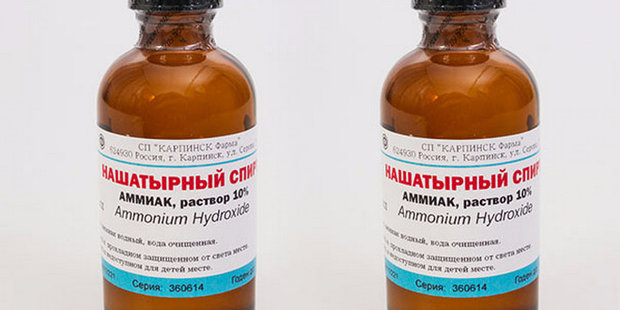Nitrogen for plants - the most basic element in the diet. In order for any plants - indoor, garden, even cereals in the fields - to actively grow, flutter, increase green mass, actively bloom and bear fruit - they need nitrogen. The most available form for the absorption of nitrogen is ammonia or ammonium nitrate NH4CL. On its application in the garden and the garden, we'll talk further.
Table of contents
What is ammonia
Ammonia is ammonia solution in which nitrogen is in the form of a compound ammonium nitrate - NH4CL.In the surrounding nature, nitrogen is most often found in the form of chemical forms such as amide NH2 +, ammonia NH3, ammonium NH4 +, nitrite NO2-, nitrate NO3-, which as a result of natural circulation in nature pass from one form to another under the influence of bacteria and microorganisms.
As you know, plants very quickly absorb nitrates in any quantity, but they do not like nitrogen in the form of ammonia. Or rather, Nitrogen in this form is not able to accumulate in the tissues of plants, that is, feeding fruits, vegetables, flowers and ammonia can not be afraid of oversaturation with ammonia.
In order for organic fertilizers to finally saturate the plants with such necessary nitrogen, they must undergo a process of decomposition of organic matter (manure, litter) with the help of microorganisms. Ammonia is converted into forms available for absorption by plants directly, without the participation of any microorganisms from the outside.
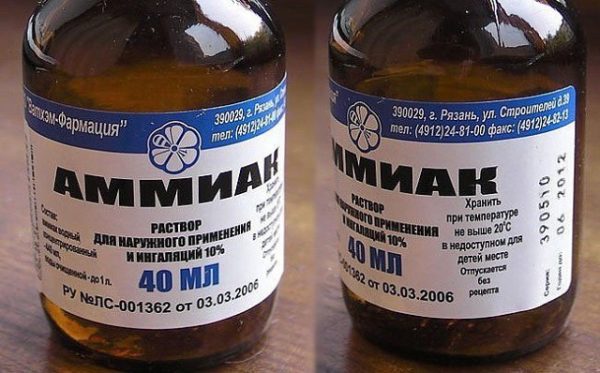
Use for garden
So, nitrogen is the main source of nutrition for plant organisms. Bright green lush crown, an abundance of flowers, and then fruit,active vegetative development - it all depends on the nitrogen content in the soil, since plants can take it only from the soil (up to 78% of nitrogen in the form inaccessible to plants). About nitrogen deficiency will tell the state of your pets:
- yellowing, paleness of the lower leaves on the seedlings and adult plants;
- thin, weak stalk and small leaves;
- growth retardation, lack of flowers;
- weak immunity - low resistance to frost.
In this case, immediate fertilization of plants with nitrogen is required. In order not to oversaturate them with nitrate, which they will accumulate in their fruits and tissues, it is best to apply ammonia in the soil (recipes for dressings will be given below).
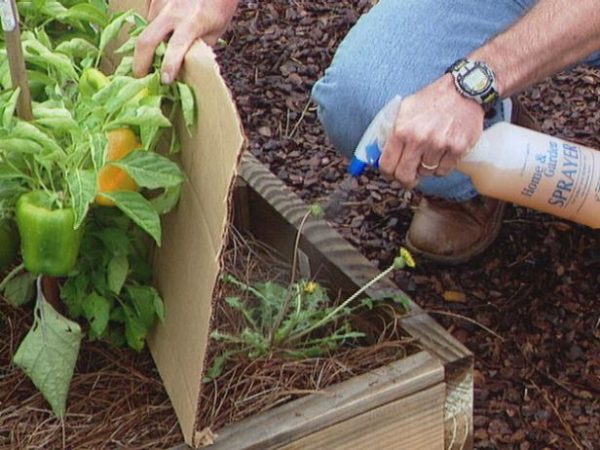
Besides, the pungent smell means repels so many pests and insects, and ammonia is a great tool for dealing with them.
Ammonia solution as fertilizer
The solanaceous crops, such as potatoes, eggplants, as well as peppers, cabbage, pumpkins, and zucchini, require a high content of nitrogen in the soil for active development and fruiting. From fruit crops - raspberries, blackberries, cherries and plums react very well to fertilizing with liquid ammonia. They need to be processed several times during the beginning of the growing season, the formation of buds and flowering.
Dahlias, roses, peonies, clematis, violets, tsinii and nasturtiums will delight with the luxurious flowering - these flowers simply adore nitrogen fertilizing in the form of ammonia solution.
Cucumbers, tomatoes, carrots, beets, corn, garlic, currant bushes and gooseberries, apples and annual flowers are content with an average nitrogen content in soils.
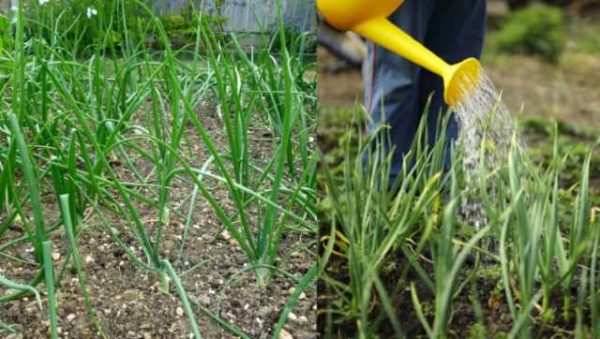
Nitrogen pears, radishes, onions and bulbous flowers are consumed in moderation.. But legumes generally do not need additional feedings - they are able to absorb nitrogen from the air and accumulate it on the nodule roots, enriching the soil for other plants.
A universal solution of nitrogenous feeding of any vegetable and fruit crops - dilute 50 ml of ammonia in 4 liters of water. If you need a weak solution - dilute 1 tablespoon of the product in 10 l of water, a solution of strong concentration (maximum allowable) - 1 teaspoon per 1 l of water.
How to feed
Fruit trees, bushes, perennial flowers are watered with a universal solution 2-3 times per season. Tomatoes are fed 1 time per week, starting with the minimum dose and gradually increasing the concentration. Under the cucumbers at the beginning of the formation of the ovaries make a solution of 2 tbsp. spoons / 10 liters of water.
To obtain a lush green arrow in the onion culture is watered with a concentrated solution (1 tsp / 1 l of water). But in order to get a good harvest of large-headed onion and garlic, they are watered once a week with a weak solution of the product.
Fertilizing with ammonia has a very beneficial effect on the seedlings of tomatoes, peppers and cabbages, which are produced 2 weeks after the pick. When planted in open ground, half a liter of the mixture (10 ml / 10 l of water) is poured into each well - this also serves as a top-dressing and fights very well with the bear.
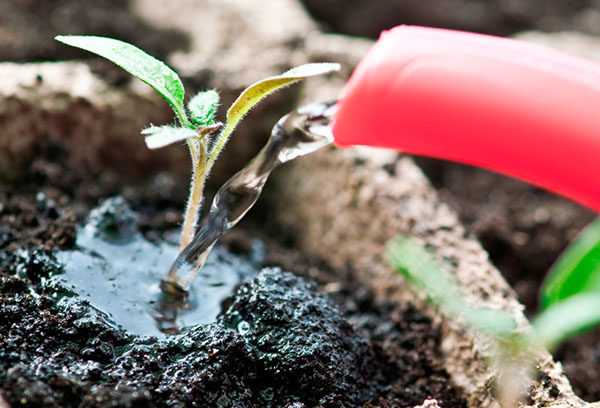
Pest control
The strong smell of ammonia affects a lot of pests, even in an imperceptible concentration for a person. It is successfully used against insects such as:
- ants;
- Medvedka;
- wireworm;
- aphid, midges on indoor plants;
- onion and carrot flies.
To do this, prepare a soap solution: 100-200 g of soap are rubbed on a fine grater, dissolved in 1 liter of hot water, and then gradually, thoroughly mixed, added to 10 l of plain water, 50 ml of 25% ammonia. Immediately obtained solution sprayed the fruits on the trees, leaves, cabbage, tomatoes, cucumbers - in a word, all the crops that need processing. This will not only scare away pests, wasps and beetles, but will also be a good foliar nutrition for plants.
To get rid of flies and ants, you can water the beds with a weak solution (preventive feeding will have a complex effect).
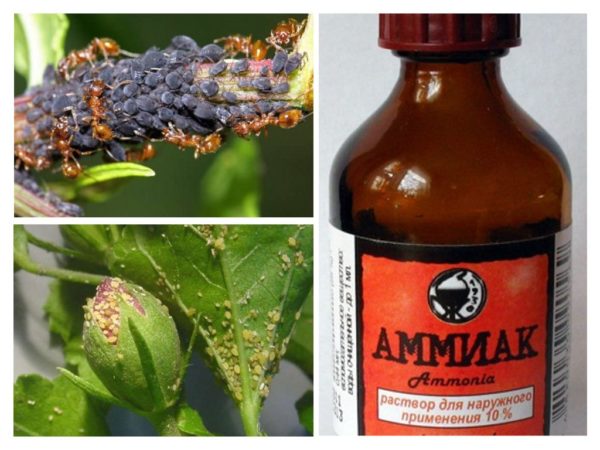
Security measures
The sharp smell of ammonia and its vapors, if the elementary protection measures are not followed, can be dangerous:
- sharp inhalation can cause respiratory arrest, therefore it is better to mix the solutions in well ventilated rooms;
- in people suffering from hypertension, can cause a sharp increase in pressure;
- ammonia - a drug and in no case can not be mixed with chlorine-containing substances;
- in order to avoid burns, to be cautioned against contact with the skin and mucous membranes.
With proper use, respect for proportions and rules, ammonia will be your indispensable helper and friend for plants. They will certainly thank you with a healthy appearance and a rich harvest.
